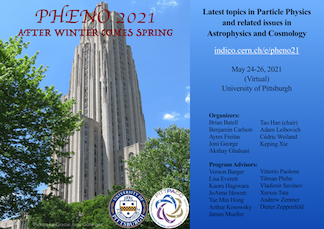Speaker
Description
Axion-like particles (ALPs) provide a promising direction in the search for new physics, while a wide range of models incorporate ALPs. We point out that neutrino and dark matter experiments, such as DUNE and CCM, possess competitive sensitivity to ALP signals. High-intensity proton beams can not only produce copious amounts of neutrinos, but also cascade photons that are created from charged particle showers stopping in the target. Therefore, ALPs interacting with photons can be produced (often energetically) with high intensity via the Primakoff effect $\gamma Z \rightarrow a Z$ and then leave their signatures via inverse Primakoff scattering or decays to photon pairs, $a \rightarrow \gamma \gamma$. The proton beam may also induce an electron flux, which, together with the cascade photons, can produce ALPs via their couplings to electrons through bremsstrahlung-like and compton-like processes. Through this coupling, ALP detection via decays to $e^+ e^-$ and inverse compton scattering $a e^- \rightarrow \gamma e^-$ are also possible.
.

